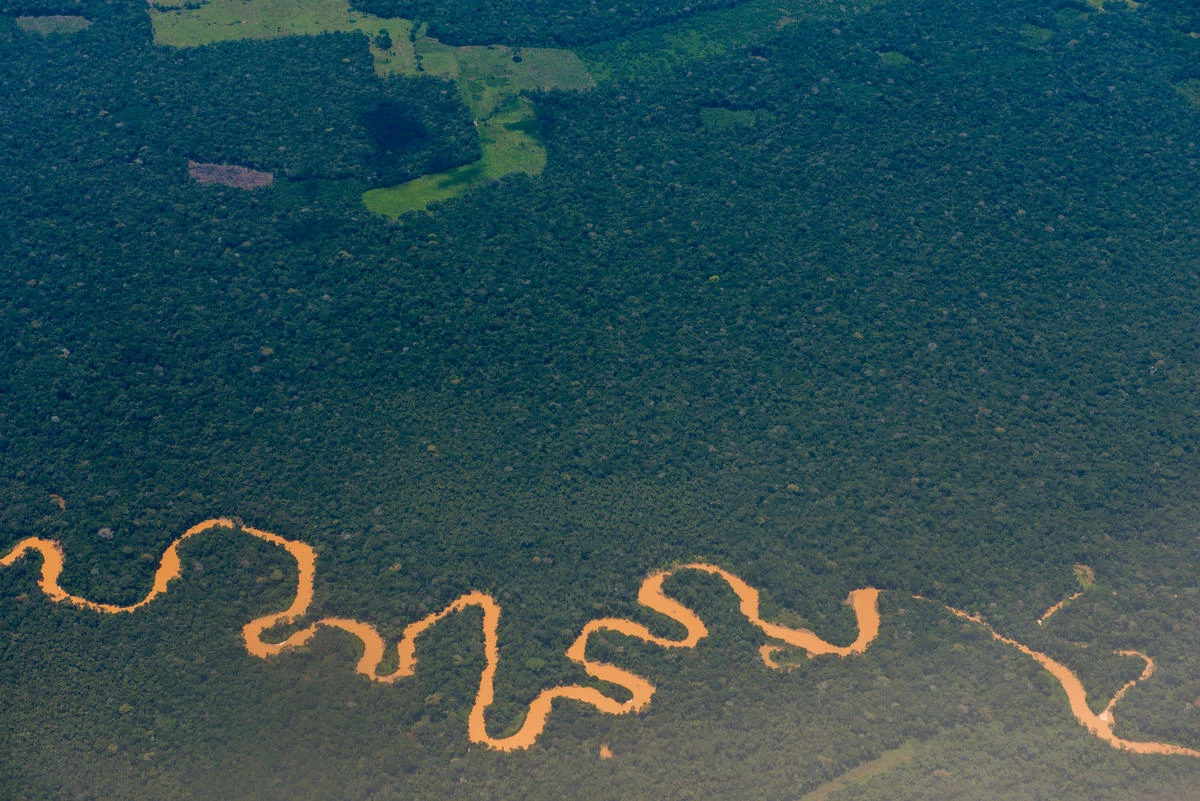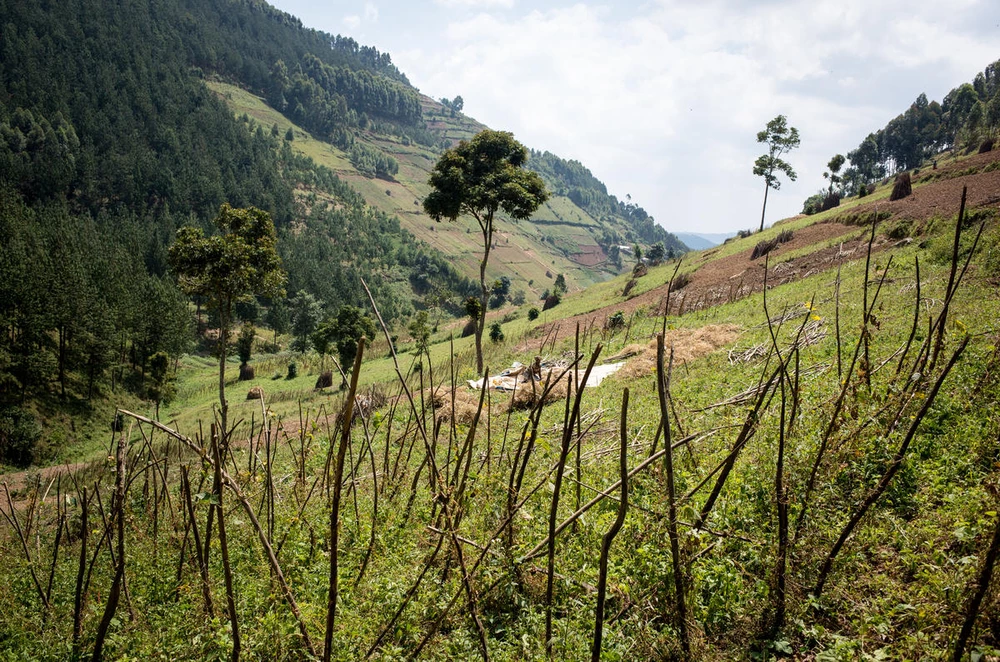Is it (im)possible to invest in biodiversity?
The financial sector has recently been showing a growing interest in investing in biodiversity-related financial instruments. But a lot of questions arise. How is biodiversity measured, and when can we speak of a positive contribution to biodiversity? What are the criteria and measurements? In this blog Lucian Peppelenbos Climate & Biodiversity Strategist at Robeco and Aaron Vermeulen Practice leader finance, WWF-NL share their thoughts on these questions.
In Robeco’s annual climate survey of 300 global investors, nearly half (48%) indicated that biodiversity is ‘significant’ or ‘central’ to their investment policy, up from only 19% two years ago. Moreover, the respondents shared that they are actively seeking to invest in biodiversity-orientated strategies within the next year. We have seen various launches of thematic biodiversity equities investment products in the market. How do these strategies invest in biodiversity?
The simple fact is that most businesses have an inevitable negative environmental impact. This comes from consuming natural resources, using energy, emitting greenhouse gases, releasing substances, converting natural habitats and more. Economic activities that improve the quality or quantity of nature are, in principle, quite limited. So, is it possible to invest in biodiversity in the first place?
Certainly, much of biodiversity is hard to invest in through listed securities, and a comprehensive bottom-up analysis is required to map those businesses that are providing the gateway to improved outcomes. A recent European Investment Bank study showed that only 3% of nature-based solutions projects in the European market have a significant private sector investor behind it; the rest is funded by governments.
Instead, to help nature, investors should concentrate on reducing and eliminating the key pressures behind biodiversity loss, such as deforestation, draining wetlands, burning fossil fuels, or polluting rivers and oceans. If these pressures on nature stop, or no longer reach excessive levels, nature will be able to take care of itself.
We know this can work, as evidenced by the recovery of the ozone layer. In 1987 governments worldwide agreed to ban nearly 100 ozone-depleting substances. This removed the key pressure, and as a result the ozone layer has now recovered almost fully.

Bending the curve
The focus of companies and investors must be on bending the curve of biodiversity loss. In line with the Global Biodiversity Agreement signed by nearly 190 countries in Montreal, they must drive a transition to reduce the environmental footprint of production and consumption.
The goal of the Global Biodiversity Framework is to reach a point of no further nature loss in 2030, and from there onward realize a pattern of economic growth that goes hand in hand with the growth of nature.
To achieve this systemic change, we need to rethink what companies are part of the transition toward a nature positive economy. What companies have business models that help reduce the pressure on biodiversity and hence assist nature in its recovery?
Defining ‘nature positive’
The Nature Positive Initiative (NPI) defines the term as “halting and reversing nature loss measured from a baseline of 2020, through increasing the health, abundance, diversity and resilience of species, populations and ecosystems so that by 2030 nature is visibly and measurably on the path of recovery.”
Although the NPI’s broad definition provides a starting point, national and global discussions are currently still ongoing on how to define nature-positive outcomes at the company or project level.
A focused but growing investment universe
Some listed companies provide solutions contributing toward a nature-positive world, measured in terms of reduced deforestation, water use, and their impact across the broad and intricate network. Think, for example, about alternative proteins, green infrastructure, consultancies designing nature-based solutions for governments, or water technology companies cleaning waste water. There is a decent investment universe for these solution providers, but it is relatively small, while many others that could help are unlisted and therefore outside the reach of equity investors.
In the private equity space, there are start-ups and scale-ups who are operating in biodiversity-rich locations around the globe – often in emerging markets. The Dutch Fund for Climate and Development, for example, supports companies in the Global South – a broad grouping of developing nations in Latin America, Africa and parts of Asia – tackling climate adaptation and mitigation with an investment need of between EUR 5 to 20 million. The fund provides finance and technical assistance to bankable projects in four key sectors: water, agriculture, forestry, and the restoration of ecosystems.

It's still not enough
But this is not enough. Financial institutions can’t rely on only financing totally green companies. For a systemic change toward a nature-positive economy, all sectors with a negative impact have to change. These transition sectors are absolutely critical to bending the curve of biodiversity loss and really solve the biodiversity crisis, we need to address the currently unsustainable value chains that are responsible for biodiversity loss and their underlying pressures.
We can only scale up and speed up systemic change by also collaborating with large-cap companies striving to reach nature-positive status. We need more of these companies to achieve the scale of change needed, and to seriously increase their level of ambition and action.
This is why Robeco takes advice from the World Wide Fund for Nature Netherlands to encourage companies to speed up their ambition and focus on the transition towards a nature-positive world and to integrate biodiversity into asset management. It is investment in these transition leaders that provide equity investors additional scale and returns as consumers, regulators and financiers provide the tailwinds precedent for outperformance.
Engagement examples
One of the companies under engagement by Robeco is a large multinational tire manufacturer. Most companies sourcing natural rubber do not have visibility on the raw material provenance and their production conditions. Yet, this tire manufacturer has invested in a pioneering web application allowing their suppliers to assess their upstream supply chain practices and identify potential risks. It also invests in increasing the recyclability of their products to reduce the consumption of raw materials.
Robeco also engages with a world-leading seafood corporation delivering five million meals annually. Most of its impact originates in the feed supply and operational sites. Shellfish and seaweed cultivation can be environmentally adverse, so the seafood producer has invested in multi-species aquaculture systems for better feed input. Although the company published figures that detail the sustainability of its operations, we encouraged them to begin reporting metrics that describe the impact of those operations and innovations on biodiversity.
Measuring is treasuring
Measuring this ambition and focus on the transition is critical. Without it, we run the risk of greenwashing. Currently, we do not have the science-based transition pathways for nature that we have for climate change and the net zero transition of industries.
The WWF-NL and Robeco are therefore working together to integrate biodiversity into asset management. WWF-NL advises Robeco on the development of a systematic framework with key performance indicators to assess to what extent companies mitigate and reduce the key drivers of nature loss in their respective sectors. This assessment will help inform Robeco’s investment decisions as well as stewardship activities.
In addition, the recently approved Taskforce on Nature-related Financial Disclosures (TNFD) gives guidance for companies to report on dependencies, impacts, risks and opportunities. This rich data source, that will begin to flow from 2024, is expected to shift global financial flows away from nature-negative outcomes towards nature-positive.
Changing the whole economy
In summary, there are some emerging public and private companies that are already focusing on solutions toward a nature positive economy. However, given the scale of the problem and opportunity, it is important to look beyond investing in these players and help the entire economy to change.
The WWF-NL and Robeco are involved in developing nature-related performance. Robeco invests in many companies and engages with them on most material issues related to nature. Investors can take an active role by investing and encouraging these companies to make their value chains more green and nature-inclusive. This is how we would like to approach investing in biodiversity.
This blog has been written by Lucian Peppelenbos is Climate & Biodiversity Strategist at Robeco and Aaron Vermeulen Practice leader finance, WWF-NL as part of the partnership of WWF-NL and Robeco.
